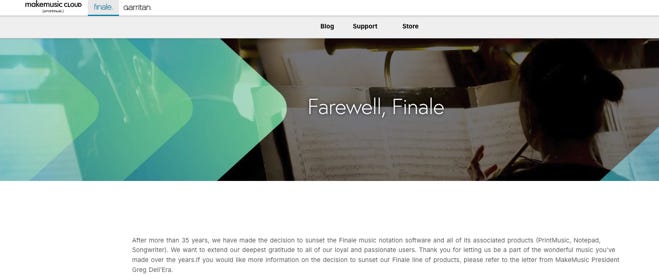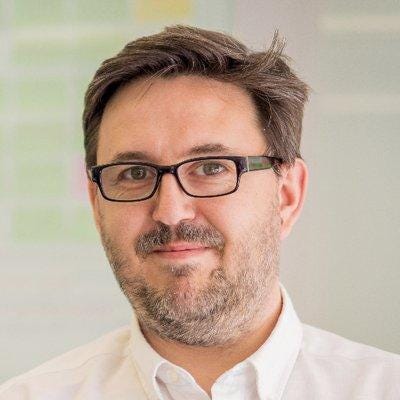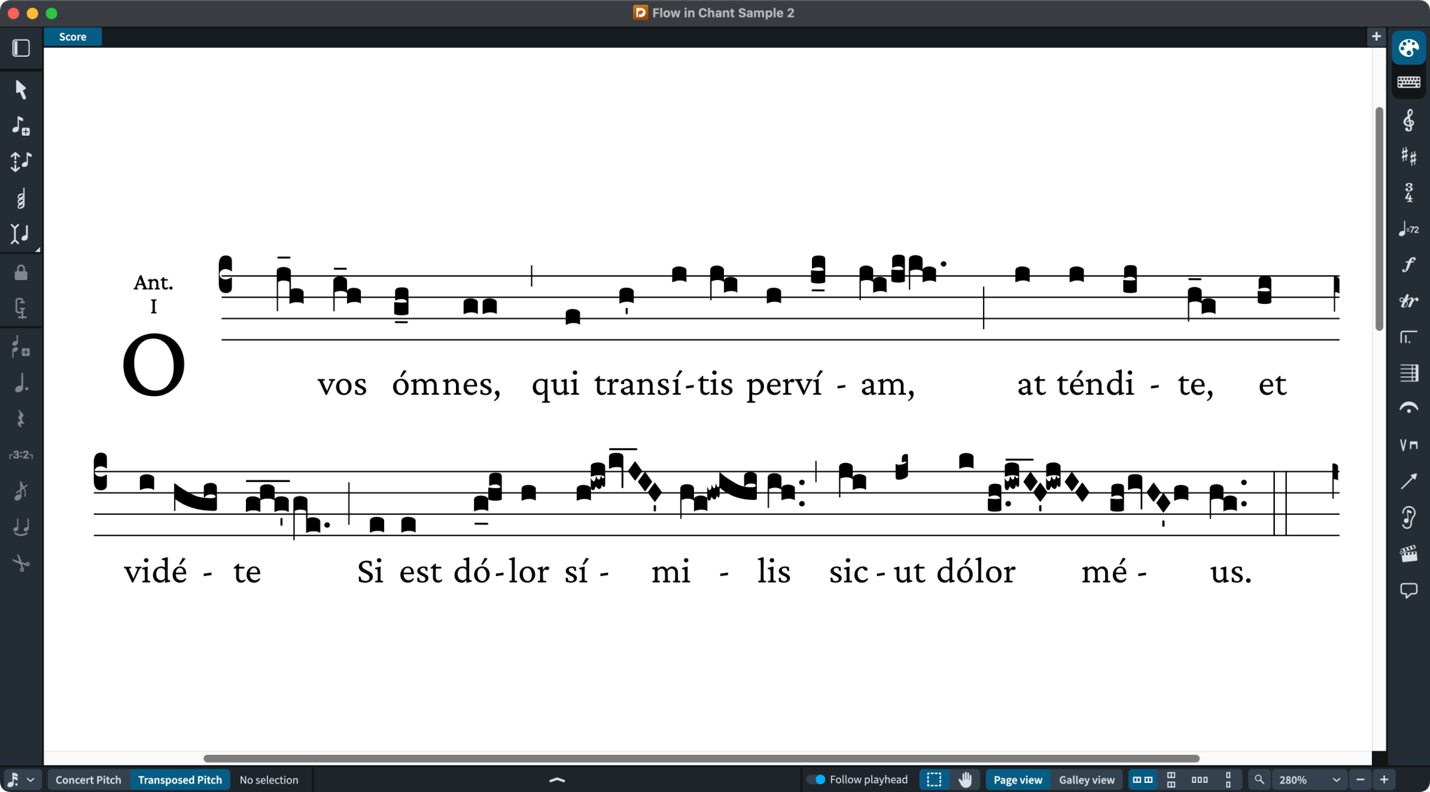Issue #2: The Best New Technology for Sacred Musicians
An Online Catholic Sacred Music Magazine by musicians, for musicians
A note from Patrick Gallagher, editor-in-chief:
In my past life as a lyricist I worked very closely with composers, all of whom more or less exclusively relied on a program called Finale to meet their composition needs. Over time, most of the composers I had worked with transitioned over to rivals, but some remained dedicated to their first love. A few months ago, that program was sunset by publisher MakeMusic, throwing the composers who still relied upon Finale into a tailspin.
When Dr. Mark Nowakowski, a remarkable composer and brilliant writer in his own right, came to us with an issue dedicated to solving technical needs for composers and sacred musicians, I was thrilled. But more than that, I began to recognize the utility of Cantate! - it’s practicality for composers in the sacred space. Last month we wrote that the part of the reason Cantate! exists is to connect sacred musicians with each other and with the trends developing in the space. Here, in this issue, Dr. Nowakowski connects sacred musicians with the technology that will allow them to better complete and share their work with other sacred artists. I can think of no better function for our little upstart magazine to have.
Thank you for continuing to support our endeavor. The support you’ve shown has been overwhelming and we are to a man so grateful to you. If you have questions or suggestions, please reach out to me at pgallagher@bxvi.org.
Without further ado, I leave you in the capable hands of Dr. Mark Nowakowski.
Cantate!
Patrick Gallagher
Editor-in-chief
Given recent major upheavals in the music notation software world, this issue focuses more on the technology of our shared craft. The late summer announcement that Finale software would suddenly discontinue support and upgrades sent composers, directors, engravers, and all manner of sacred musicians into a tailspin of activity. Finale recommended transition to Dorico software, and Dorico obliged with a generous crossgrade offer. Since then, the flurry of new learning, questions, excitement and sometimes despair have permeated our field. As the dust settles from this moment, we have interviewed the creator of Dorico software, Daniel Spreadbury. We also review a new tool called Cantorum, which allows for the easy input and manipulation of chant notation into Dorico. We follow with a related technical tip for those seeking beautiful playback, and finally return to the real with a special “piece of the month.”
Dr. Mark Nowakowksi, Co-Editor
Dr. Mark Nowakowski is a scholar and composer whose music has been performed internationally and released on the Gramophone-praised Naxos Records album, “Blood, Forgotten.” His writings on Catholicism, music, aesthetics, and music technology appear in numerous publications regularly, while he also maintains an active schedule as a composer and professor of music. A proud native of Chicago, he currently lives with his wife and three children in Ohio.
Finale’s Finale: A Changing of the Guard in Music Notation Software
An Interview with new composition software “Dorico” team lead Daniel Spreadbury
MN: Daniel, the story of the end of your time with Sibelius and the beginning of Dorico notation software is rather well-known by now. Could you go back even farther and talk about how you, as a musician, got into software development?
DS: I’m of the generation that first had access to home computers, thanks to my dad and my older brother, so I have been fascinated by computing as far back as I can remember. Music and technology have always had a strong connection for me, since my earliest childhood memories. I was incredibly fortunate that after I graduated with my music degree, I was able to combine both interests, working for Sibelius during the day and singing as a lay clerk in daily services at Ely Cathedral each evening.
MN: You mentioned to me before that you actually have a background in sacred music. Can you speak a bit more to that?
DS: My parents weren’t regular churchgoers, but the house was always full of music, and I loved singing, so I would sing anywhere that would have me! Along with my younger brother and sister, we went to a local Methodist church hall where the local boy scouts and girl guides used to meet. Somehow the woman who ran the youth choir at the church figured out that the three of us could all sing, and she recruited us into that group. In my teenage years, it happened that the head of music at my secondary school was also organist at the town centre parish church, and he invited me to join the choir there. That was where I cut my teeth on the Anglican repertoire of mass settings and evening canticles. When I got up to Oxford, I immediately joined my college chapel choir – and every other choir that would have me – and was handy enough that I was invited to cover for the choral scholars at the bigger chapels at New College and Magdalen during exams, so I got to sing under Edward Higginbottom and Bill Ives during my student days. After college, I was appointed cantoris tenor lay clerk in the choir of Ely Cathedral, and loved the years I spent there as part of a great choral foundation that – barring the interruption brought about by Oliver Cromwell! – has worshipped continuously on that site for nearly a thousand years. These days, I lead the choir at my local parish church in Enfield, and sing regularly with the choir of Christ Church, Southgate, itself a very fine amateur cathedral-style choir.
MN: The end of Finale software was a stressful blow to many of our colleagues. While I think the suggestion by Finale's team to "go Dorico" was quite natural, could you share how this came about?
DS: MakeMusic decided that they could no longer keep developing Finale because the high cost and difficulty of maintaining the program’s aging code made it harder and harder to keep up with the evolving needs of today’s musicians. I know it was a hard decision, but we have been delighted to partner with them to provide a path for Finale users to move forwards with Dorico. It’s been a big shock for many Finale users, but many thousands have made the switch to Dorico already, and although it’s not easy to learn a whole new program, I’m pleased to say that many users are quickly able to get to grips with Dorico. After their initial frustration, many of them tell us that they wish they had switched sooner!
MN: What is your favorite feature of Dorico software?
DS: Asking me to pick my favourite feature in Dorico is like asking me to pick my favourite child! My own use of Dorico is almost entirely in choral and vocal music, composing and arranging for the various choirs I work with. From that point of view, the thing I appreciate most about Dorico is that I can focus almost entirely on writing the music: by the time I’ve input the notes, added the lyrics, and added tempo, phrasing and dynamics, the music is practically ready to print. Dorico’s default music spacing and layout algorithms are so good, that I really can simply type in the music and print it out, spending almost no time at all on tweaking things.
MN: Yes, that’s been my own experience: hundreds of hours returned from formatting concerns. Finally, with so many new users coming on board, could you perhaps give us a sneak peak at what is next in development for Dorico?
DS: By the time your readers are reading this, a new version of Cubase, our digital audio workstation, will be available, featuring a brand new score editor based on Dorico technology. That has been a major project for several members of our team, who have been working on it for years. This represents the start of a new chapter of development that will allow us to bring Cubase and Dorico closer together, which is something that many of our users have been impatiently waiting for! For Dorico itself, our next major version will expand support for 20th century notations, and include some unique new features to help you get to a perfect end result even more quickly.
Daniel Spreadbury has worked for Steinberg, a world leader in sound technology, since November 2012. He has worked in the field of music notation software since 1999.
He holds a Master of Arts degree in Music from University College, Oxford, and is a keen choral singer, singing professionally in the choir of Ely Cathedral for a couple of years after completing his degree studies. He is also choral director of the Cantilena Singers, an amateur chamber choir based in south Cambridgeshire. He is happily married to his beautiful wife, Sarah, and has two adorable children, a daughter called Amelia and a son called Ayrton.
Review: Cantorum – plainchant notation for Dorico
New Program Solves Major Technical Issues for Sacred Musicians
Dan Kreider could not have picked a better time to implement his latest project, Cantorum. Retailing at 49.99, it is an ingenious solution to the problem of chant notation in Dorico. Previously, users would have to use any number of available packages to create graphics files of their chant, inputting them as images into their preferred notation software. Dorico users can now simply type their chant notation into the software using numbers, and even use it alongside modern notation in more complex scores.
Kreider’s “Cantorum” is really a new font: Dan is quick to point out that the font can be applied elsewhere, but is specifically designed to go well with Dorico. For those interested in seeing this beautiful new tool in action, this tutorial video shows how to work with Cantorum. Fair warning: the initial setup takes a bit of detailed tweaking, but the end results justify the means.
A church musician, Dan Kreider writes and arranges weekly for a thriving community of instrumentalists and singers. He is also a professional music engraver, orchestrator, and music publisher. Mr. Kreider has a doctorate in choral conducting, with additional studies in piano, theory, and composition.
Tips from Dr. Mark
How to get the most beautiful playback possible
As this has turned into a bit of a technology issue, our tip of the month can follow on this theme. For most composers and arrangers, notation software has long since ceased being just an engraving tool, and has become an environment for composition. Quite naturally, creative users desire the most timbrally accurate, pleasing, balanced, and musical playback that they can get from their software. Overall the past several years, Arne Wallander has provided a wonderful solution with “Noteperformer”, an affordable package which installs seamlessly into all of the major notation software packages, providing quality playback which is a considerable upgrade over standard playback option. While many have discovered Noteperformer in recent years, they may not be aware of a wonderful secondary option available in this software: Noteperformer Playback Engines. These engines allow noteperformer to cease being the source of playback sound, and instead apply its intelligent playback engine to another commercially available virtual instrument. Composers can now use some of the very same Hollywood-grade virtual instruments on display in many of the industry’s best film scores, including the Eastwest Hollywood Orchestra, Spitfire’s BBC Orchestra, and libraries from Cinesamples (among others). Where sounds in these new libraries are not covered, Noteperformer can fall back on its own sounds.
While these software interfaces cost an additional 69-89 dollars, there are many composers across the internet which have used them to work entirely in notation (cutting the DAW out of the realization process entirely). More information can be found at this link.
Worth a Listen
Prologue from ‘Two Streams’, by Daniel Knaggs:
Available from Capella Records:
https://cappellarecords.com/recording/daniel-knaggs-two-streams/
Editor’s Note:
Thank you for reading Cantate!, a Sacred Music publications by musicians, for musicians. Our goal is to connect Sacred Musicians around the country to each other, to embrace and promote the contemporary sacred music scene, and to help Sacred musicians discover the artists, tools, and material they need to bring their parishes in closer communion with God.
The magazine is a product of The Benedict XVI Institute, a non-profit founded by Archbishop Salvatore J. Cordileone. You may learn about the Institute at our website, www.benedictinstitute.org.
Any questions about the publication should be directed to its editor, Patrick Gallagher, at pgallagher@bxvi.org.








Anyone have a recommendation for iPad sheet music software (e.g., loading digital sheet music pages into a single document, so that the iPad can be used as a digital 'binder')?
Thanks to Mark Nowakoski for a most elegant discussion on electronic technology regarding notation. While I am not a big "user" of notational software, I appreciate all the aspects examined here. Kudos for the good work.